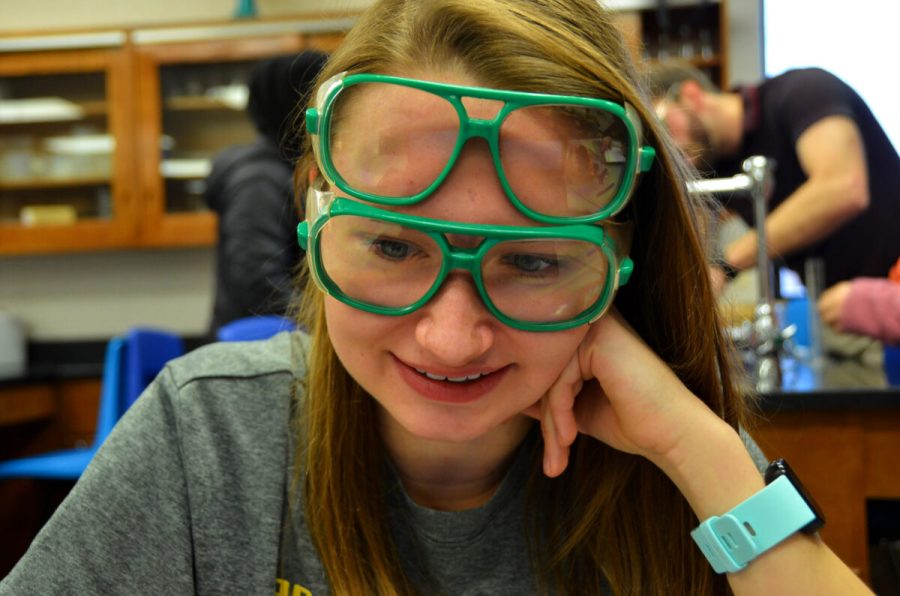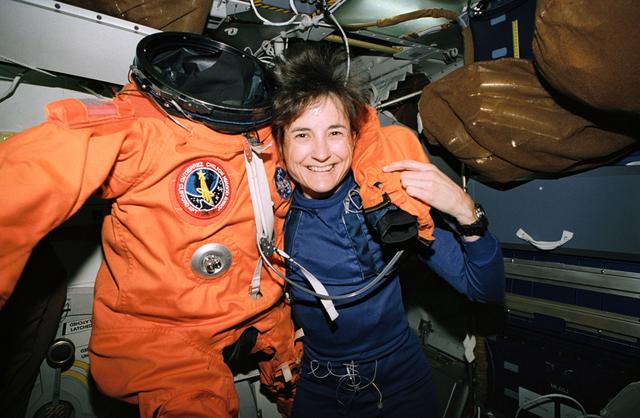The contributions of women to the scientific research base often go unnoticed, as they have had credit for work taken away by male colleagues, been written out of textbooks and been turned away from universities and institutions for their gender. Below are five women researchers who changed the scientific landscape through their groundbreaking discoveries.
Barbara McClintock
Won a Nobel Prize in Physiology or Medicine in 1983 for her discovery of mobile genetic elements.
[vc_empty_space][vc_empty_space][vc_empty_space][vc_empty_space][vc_empty_space][vc_empty_space][vc_empty_space][vc_empty_space][vc_empty_space][vc_empty_space][vc_empty_space][vc_empty_space][vc_empty_space][vc_empty_space][vc_empty_space][parallax_row image=”327656″][vc_empty_space]
Born June 16, 1902, Hartford, Connecticut
Died Sept. 2, 1992, Huntington, New York
Barbara McClintock was an American scientist who researched corn’s hereditary characteristics, including traits such as the different colors of its kernels at Cornell University. She studied how these characteristics are passed down through generations and linked this to changes in the plants’ chromosomes. During the 1940s and 1950s, McClintock proved that genetic elements are not stationary and can sometimes change position on a chromosome. This causes nearby genes to become active or inactive, leading to mutations in pigment. McClintock’s work was considered too radical for years and ignored by other scientists. Over time, the scientific community’s understanding of the gene code through research of genes improved, and they verified her findings. McClintock became the first woman to be the sole winner of the Nobel Prize in Physiology or Medicine.
Katie Bouman
One of the scientists who released the first image of a black hole in 2019.
[vc_empty_space][vc_empty_space][vc_empty_space][vc_empty_space][vc_empty_space][vc_empty_space][vc_empty_space][vc_empty_space][vc_empty_space][vc_empty_space][vc_empty_space][vc_empty_space][vc_empty_space][vc_empty_space][vc_empty_space][vc_empty_space][parallax_row image=”327739″][penci_text_block block_title_align=”style-title-left”]
Born 1989, West Lafayette, Indiana (exact date not known)
Katie Bouman is an American computer scientist whose research led to the creation of an algorithm that helped take the first picture of a black hole. The black hole they photographed is 55 million light years away from Earth, meaning that they photographed a moment from 55 million years ago. After 10 years of planning and $50 million of investments, the Computer Science and Artificial Intelligence Laboratory at the Massachusetts Institute of Technology released this image. The team built a computational telescope by connecting existing telescopes around the world to make a network that worked together. From these telescopes, they collected about five petabytes of data, about 5,000 laptops worth of data. Bouman led one of four teams responsible for turning the data into one image. Currently, Bouman is a postdoctoral fellow at the Harvard-Smithsonian Center for Astrophysics.
Mary Leakey
[/penci_text_block]
In 1948, she discovered the first fossilized Proconsul skull, an extinct ape which is now believed to be ancestral to humans.
[vc_empty_space][vc_empty_space][vc_empty_space][vc_empty_space][vc_empty_space][vc_empty_space][vc_empty_space][vc_empty_space][vc_empty_space][vc_empty_space][vc_empty_space][vc_empty_space][vc_empty_space][vc_empty_space][vc_empty_space][vc_empty_space][parallax_row image=”327742″][/vc_column_inner][/vc_row_inner][penci_text_block block_title_align=”style-title-left”]
Born Feb. 6, 1913, London, United Kingdom
Died Dec. 9, 1996, Nairobi, Kenya
Mary Leakey was a British archaeologist and paleoanthropologist who made several fossil finds of great importance in the understanding of human evolution. She worked alongside her husband, Louis Leakey, in Kenya, where she oversaw the excavation of various prehistoric sites. In 1948, she discovered the skull of Proconsul africanus, an ancestor of both apes and early humans that lived about 25 million years ago. The fossil, believed to be more than 18 million years old, was the first species of the primate genus to be discovered from the Miocene era. In 1978, she also discovered several sets of footprints at the site Laetoli in volcanic ash by early hominins, a tribe of primates, that lived about 3.5 million years ago. The footprints indicated that they walked upright.
Tu Youyou
[/penci_text_block][/vc_column_inner][/vc_row_inner]
Won a Nobel Prize in Physiology or Medicine in 2015 for her discoveries concerning a novel therapy against Malaria.
[vc_empty_space][vc_empty_space][vc_empty_space][vc_empty_space][vc_empty_space][vc_empty_space][vc_empty_space][vc_empty_space][vc_empty_space][vc_empty_space][vc_empty_space][vc_empty_space][vc_empty_space][vc_empty_space][vc_empty_space][vc_empty_space][parallax_row image=”327741″][penci_text_block block_title_align=”style-title-left”]
Born Dec. 30, 1930, Zhejiang Ningbo, China
In 1967, Chinese scientists started searching for a cure for malaria, which caused tremendous casualties among its soldiers in the Vietnam War. The parasite that spreads malaria had become resistant to chloroquine, the standard treatment at the time. Chairman Mao Zedong launched Project 523 in 1967 to find a cure, headed by Tu Youyou in 1969. Her team examined ancient Chinese medical tests to understand traditional ways of fighting malaria. Sweet wormwood, a compound used in 400 AD, treated intermittent fever, which was a symptom of malaria. After various preparations of wormwood, Tu’s team tested it on mice and monkeys with a 100 percent success rate. The World Health Organization accepted the compound’s active ingredient, artemisinin as part of a combination therapy treatment for malaria. Tu’s 2015 receival of the Nobel Prize made her the first mainland Chinese scientist to have received one in a scientific category, and she did so without a doctorate, a medical degree or training abroad.
Mamie Phipps Clark
[/penci_text_block]
Investigated internalized racism through her experiment “The Development of Consciousness of Self in Negro Pre-School Children.”
[vc_empty_space][vc_empty_space][vc_empty_space][vc_empty_space][vc_empty_space][vc_empty_space][vc_empty_space][vc_empty_space][vc_empty_space][vc_empty_space][vc_empty_space][vc_empty_space][vc_empty_space][vc_empty_space][vc_empty_space][parallax_row image=”327740″][penci_text_block block_title_align=”style-title-left”]
Born April 18, 1917, Hot Springs, AR
Died August 11, 1983, New York, NY
Dr. Mamie Phipps Clark and her husband Dr. Kenneth Clark were the first African-Americans to obtain a doctoral degree in psychology from Columbia University. After graduating, Dr. Mamie Phipps Clark learned job positions proved difficult to find.
“Although my husband had earlier secured a teaching position at the City College of New York, following my graduation it soon became apparent to me that a black female with a Ph.D. in psychology was an unwanted anomaly in New York City in the early 1940’s,” she said.
Dr. Mamie Phipps Clark noticed minority children had limited mental health service choices, and she and her husband started working on their classic experiment. They showed black children two identical dolls excluding the fact that one was black and one was white and then asked the children, aged three to seven, a series of questions including which doll they preferred to play with, which doll was a “nice” doll, which one was a “bad doll” and which one looked most like the child. A majority of the children preferred the white doll and assigned positive characteristics to it. Because of this, the Clarks concluded that segregation created a sense of inferiority among black children that damaged their self-esteem. During Brown v. Board of Education, the U.S. Supreme Court case that established racially segregated public schools as unconstitutional, the Brown team referenced the researchers’ experiment throughout the trials and the Court cited them in their Brown decision.
How do you think women have impacted science throughout history? Let us know in the comments below.[/penci_text_block]



















































































